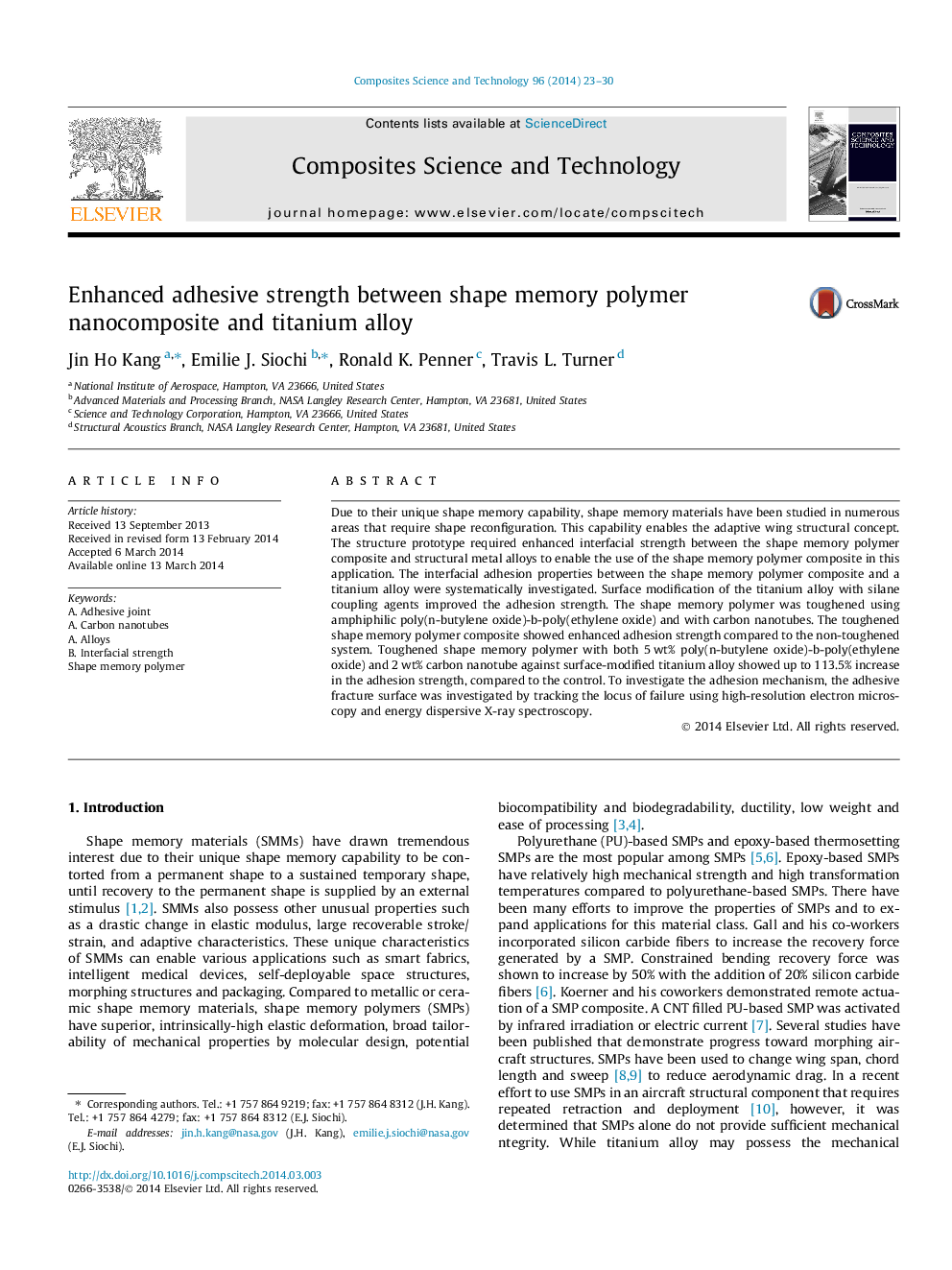| Article ID | Journal | Published Year | Pages | File Type |
|---|---|---|---|---|
| 820337 | Composites Science and Technology | 2014 | 8 Pages |
Due to their unique shape memory capability, shape memory materials have been studied in numerous areas that require shape reconfiguration. This capability enables the adaptive wing structural concept. The structure prototype required enhanced interfacial strength between the shape memory polymer composite and structural metal alloys to enable the use of the shape memory polymer composite in this application. The interfacial adhesion properties between the shape memory polymer composite and a titanium alloy were systematically investigated. Surface modification of the titanium alloy with silane coupling agents improved the adhesion strength. The shape memory polymer was toughened using amphiphilic poly(n-butylene oxide)-b-poly(ethylene oxide) and with carbon nanotubes. The toughened shape memory polymer composite showed enhanced adhesion strength compared to the non-toughened system. Toughened shape memory polymer with both 5 wt% poly(n-butylene oxide)-b-poly(ethylene oxide) and 2 wt% carbon nanotube against surface-modified titanium alloy showed up to 113.5% increase in the adhesion strength, compared to the control. To investigate the adhesion mechanism, the adhesive fracture surface was investigated by tracking the locus of failure using high-resolution electron microscopy and energy dispersive X-ray spectroscopy.
